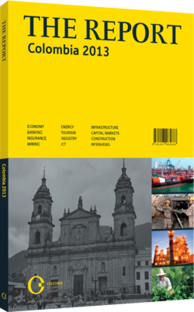Broad expansion: Convention centres in regional cities on the rise
In May 2013 tour associations and the business community received confirmation of what many already expected – Colombia keeps growing as a prime destination for the global meetings industry. In its latest annual report, the International Congress and Convention Association (ICCA) ranked Colombia as the fourth most popular destination among Latin American countries, having held 138 major events in 2012.
The meetings, incentives, conferences and exhibitions (MICE) segment has grown exceptionally from a low base. In 2006 the country ranked 50th in the ICCA survey with only 23 events and has since been steadily climbing each year, ranking 29th among the 140 countries evaluated by the association in 2012.
ADVANTAGES: Part of Colombia’s success can be attributed to the country’s distribution of major cities. Between Bogotá, Medellín, Cali, Cartagena and Barranquilla, not only do the options for holding international events abound but also the efforts to attract them multiply. Large cities either have independent convention bureaus or departments within regional chambers of commerce that are dedicated to promoting MICE events. In Bogotá for example, collective efforts have borne the fruits of concrete initiatives such as the City Marketing Strategy and the Business Tourism Cluster.
BENEFITS: The benefits of convention tourism are reflected in the numbers. In 2012 Bogotá held 50 internationally recognised events, which brought some 17,000 visitors to the capital. According to the Bogotá Convention Bureau (BCB), this corresponded to an estimated $26.7m for the city, calculated by the average spending of visitors, including room and board, event registration, restaurants, nightlife, transportation, shopping and entertainment. The number of visitors to Bogotá for such events in the first half of 2013 has already surpassed 2012’s total, according to BCB.
Normally funded by governments, institutions or companies, convention tourists are widely known for generous spending, which can range from $350 to $500 per day for trips that last on average six days.
For Adriano Fajardo Ballen, vice-president of Cotelco, Colombia’s hotel and tourism association, the acceleration of the MICE segment is due in large part to the country’s competitive prices. “Within Latin America, Colombia’s low prices are a competitive factor which, amidst the economic slowdown in the US and Europe, will continue to attract major international events and conferences,” Fajardo told OBG.
EXPANSIONS: While Bogotá has 14 convention centres with capacity ranging from 50 to 2500 people, the current stock of international-grade hotels is distributed between 39 properties, which altogether amount to around 5400 rooms. “We still lack infrastructure for the type of demand that is pouring in, but several projects are under way that aim to really consolidate the meetings industry,” Fajardo told OBG.
The country’s largest expansion project is currently taking place in one of the capital’s key fairgrounds, Corferias. Part of the design includes added public spaces, shopping centres, enlarged fairgrounds, a 200-room five-star hotel and a new convention centre that will cover around 25,000 sq metres.
Slated for inauguration in 2015, the Ágora Bogotá International Convention Centre will have a main hall with capacity to hold 4000 seated attendees, several general meeting rooms with various capacities up to 1000 and a cocktail area for 2000 guests. Estimated investments total $125m and plan to make the centre an icon within Bogotá and Latin America.
While destinations such as Cartagena and Medellín are also growing rapidly within the convention industry – ranked by the ICCA as 8th and 14th most popular locations in the region – efforts to boost segment infrastructure are shifting towards smaller urban areas with less than 1m inhabitants. A public-private initiative was recently launched to construct convention centres in Pereira, Ibagué, San Andrés, Bucaramanga and Popayán. Work has already begun in Pereira and Ibagué, with estimated required investments of COP17bn ($10m) and COP25bn ($15m), respectively.
You have reached the limit of premium articles you can view for free.
Choose from the options below to purchase print or digital editions of our Reports. You can also purchase a website subscription giving you unlimited access to all of our Reports online for 12 months.
If you have already purchased this Report or have a website subscription, please login to continue.

